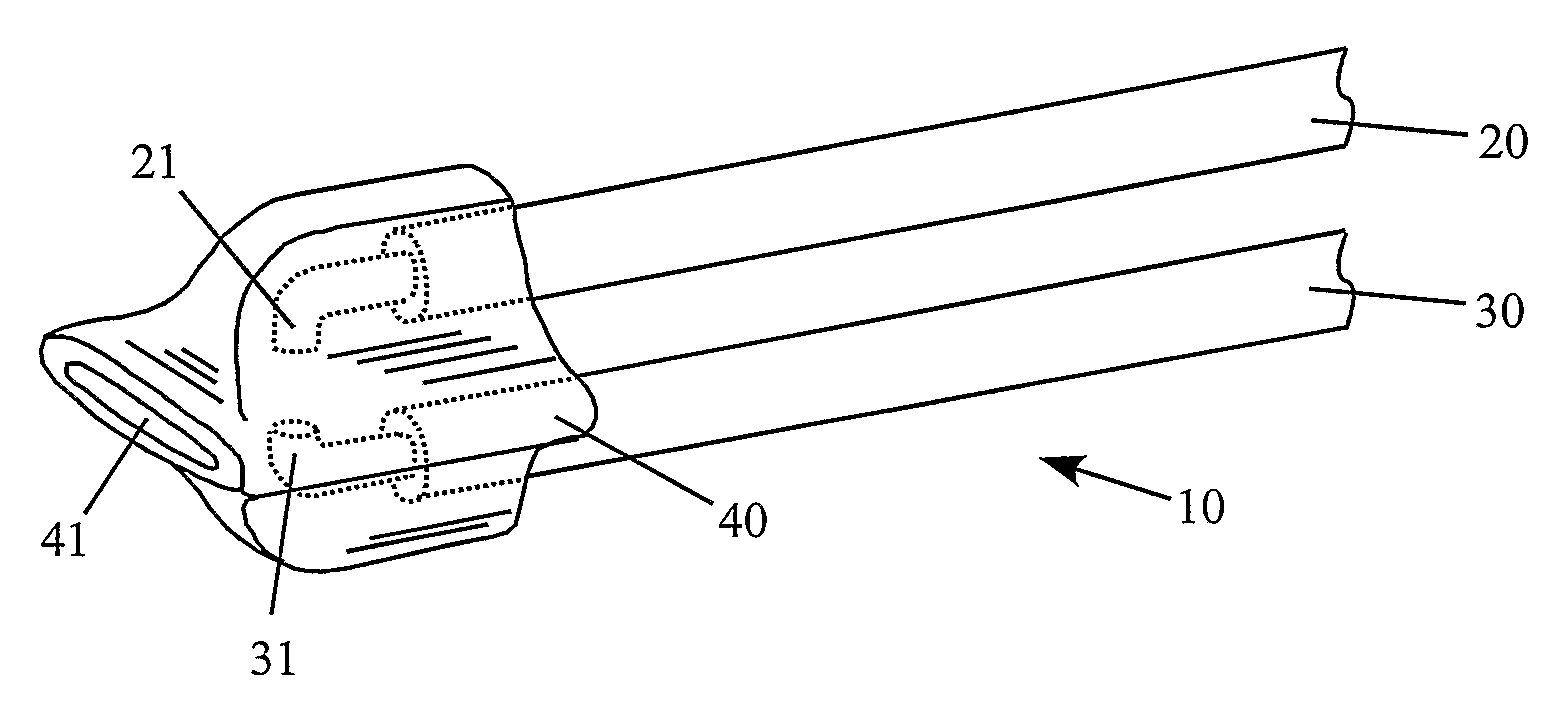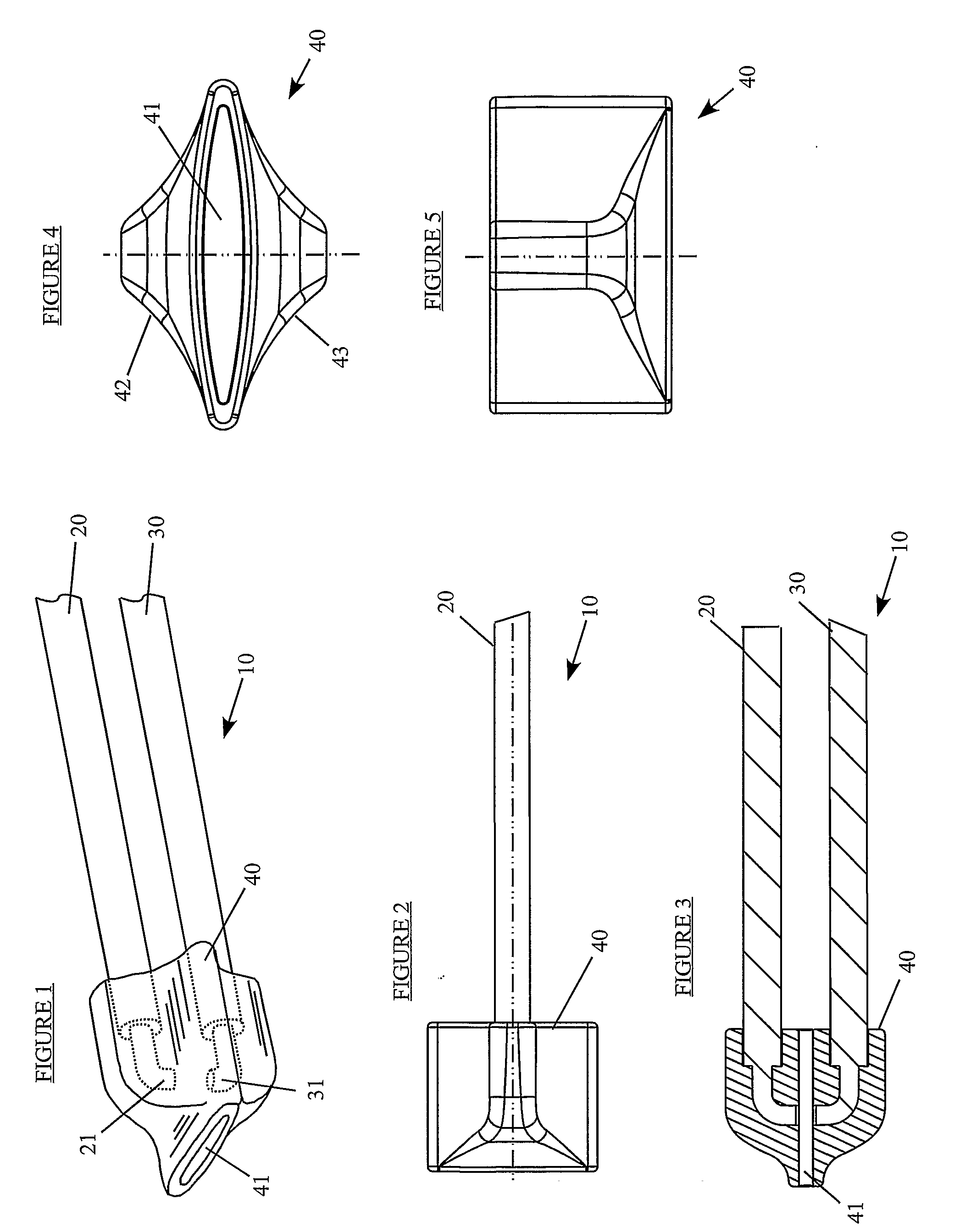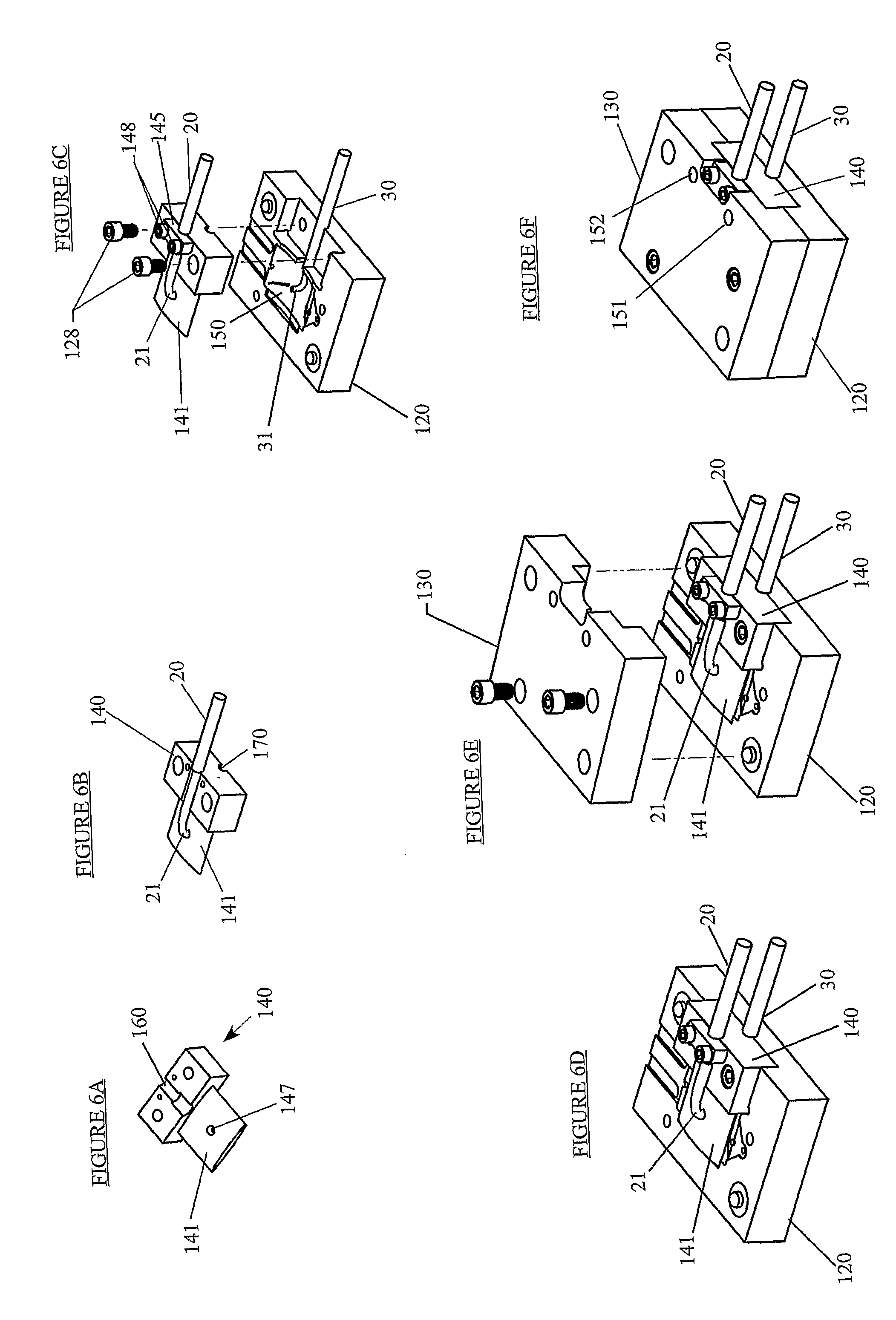Pulse Oximetry Grip Sensor and Method of Making Same
a pulse oximetry and sensor technology, applied in the field of pulse oximetry grip sensor, can solve the problems of pulse oximetry system providing inaccurate spo2 measurements or failing to provide such measurements at all, and the volume of blood flowing through any given artery or branch is light increased
- Summary
- Abstract
- Description
- Claims
- Application Information
AI Technical Summary
Problems solved by technology
Method used
Image
Examples
Embodiment Construction
[0034]FIGS. 1-5 illustrate a probe for use with a pulse oximeter apparatus, and FIGS. 6A-6F illustrate a mold fixture for making such a probe. These figures and the following detailed description also provide the essential details for a method of making the probe.
[0035]FIGS. 1-5 illustrate the pulse oximetry probe made according to a first embodiment of the invention. The probe, generally designated 10, includes two fiber optic bundles 20 and 30 and a housing 40. Typically consisting of numerous fibers, each fiber optic bundle will preferably have its ends ground and polished to make the transfer of light efficient as possible. In this regard, the first fiber optic bundle 20 features an emitter portion 21 at one of its ends. As best shown in FIGS. 1 and 3, this end will preferably be right-angled so that it may be easily positioned upon an insert member of a mold as will be explained below. Similarly, the second fiber optic bundle 30 includes a detector portion 31 at one of its ends...
PUM
| Property | Measurement | Unit |
|---|---|---|
| wavelengths | aaaaa | aaaaa |
| wavelengths | aaaaa | aaaaa |
| wavelengths | aaaaa | aaaaa |
Abstract
Description
Claims
Application Information
 Login to View More
Login to View More - R&D
- Intellectual Property
- Life Sciences
- Materials
- Tech Scout
- Unparalleled Data Quality
- Higher Quality Content
- 60% Fewer Hallucinations
Browse by: Latest US Patents, China's latest patents, Technical Efficacy Thesaurus, Application Domain, Technology Topic, Popular Technical Reports.
© 2025 PatSnap. All rights reserved.Legal|Privacy policy|Modern Slavery Act Transparency Statement|Sitemap|About US| Contact US: help@patsnap.com



